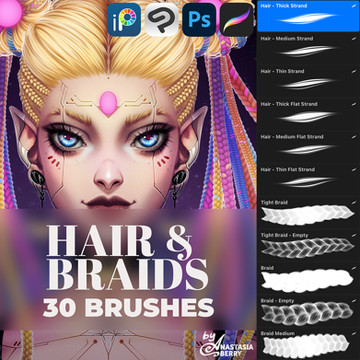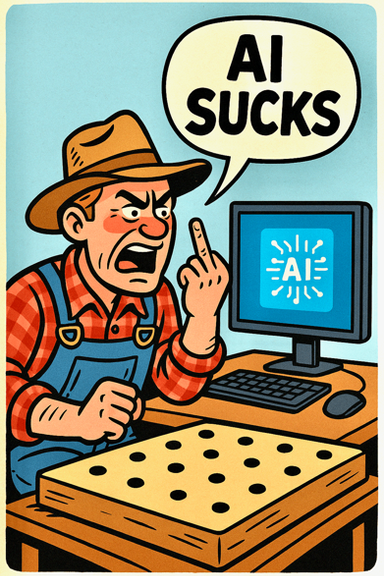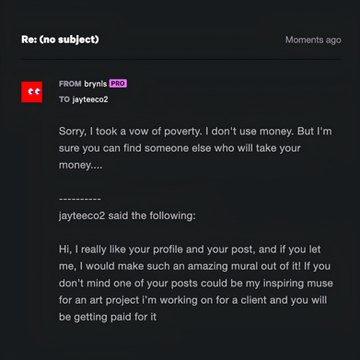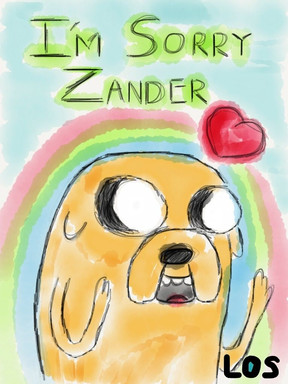HOME | DD
 Nsio — Mini tutorial: From Basics to Complexity
Nsio — Mini tutorial: From Basics to Complexity

#basics #hands #methods #tips #tutorial #howtodraw
Published: 2016-05-09 21:20:27 +0000 UTC; Views: 85866; Favourites: 1959; Downloads: 1826
Redirect to original
Description
I felt it was necessary to draw this kind of mini tutorial just to give an idea how I work on drawings and why I can draw without references. I'll use hands as an example.I believe most people, me included, started with a thought "now I want to draw hands" or something like that. But why would you try drawing hands if you can't draw anything at all? Sure, you need to practice drawing hands, but you will just keep failing a looong time if you jump straight into it. You can look references and study anatomy, but in the end, you probably will just tire yourself. At least I would, which is why I chose a different route. To learn drawing hands, you don't practice hands. You start from basics (note that this is not step by step tutorial, so these aren't necessarily the steps you need for drawing a hand).
Skill jump 1
This is the most deceiving jump as it looks there is hardly any improvement. This is the biggest leap you will take. If you are a beginner, you will come to realize that drawing even a very basic cube is difficult. It's pretty much as simple as it can get and it's still hard. At the same time you may feel expert of drawing cubes after a while. But no, you need to keep drawing those cubes in order to reach mastery of perspective. Now, at this point you may not really need to know how to use one, two or three point perspective, it's just about understanding how a cube looks from different viewing angle
So when you can actually draw a fairly decent (not necessarily perfect cube) you can take the next jump
Skill jump 2
Surprise, it's about drawing even more cubes! This phase is about getting used to work in perspective and build up some mileage in drawing skills. Even if you can draw a nice cube once doesn't mean you can draw a nice cube next time. If you keep drawing a lot of cubes in one go, you will find that you will start to loose your grip and they end up looking just like the bad cube on the first jump. Perseverance and patience is the key here. Btw, this still has nothing to do with hands at all.
Skill jump 3
This isn't really any different from previous jump. It's just about combining some cubes to form chains. Now they actually start looking like fingers already. Draw these kind of chains from different angles and bend them in different ways.
Skill jump 4
This looks like a big jump, but it's just like the skill jump 2 really. Just more cubes next to each other. At this point you most likely need some references, namely your own hand. You also need to study things like symmetry, proportions, scales, etc (but for the simplicity I have opted those out, they have their own skill jumps). The big challenge is to compile a full hand so that it looks convincing even in its cube form
Skill jump 5
This can be difficult but you should also have a lot of experience about drawing by now. You ought to be able to draw just about anything by constructing it with cubes (although here is demonstrate only hands). Now you just observe and study and apply that knowledge on top of your cubes. In fact, if you have done your practice well, you may not need to draw the cubes anymore. The point is to visualize the cubes in your mind as imaginary guides. (It's never wrong to keep drawing the cubes, in fact, at difficult parts a drawn cube will make it easier to visualize how you need to draw the hand. Skipping cubes is just about saving some time).
If you understand how 3D forms work by now, you ought to know how to shade as well. A free skill yay!
Skill jump 6
At this point you will actually make those hands do something. This gets tricky only because you will need to know how hands interact with other objects. But if you have good memory, you may not need references at all. However, if you want to be correct with your drawings (like playing a distinct chord on a guitar) you have to study the subject. I'm satisfied if it resembles the real thing even remotely.
So what's the actual point of this method? The big idea is to make it easier to remember everything. You see, basically you only need to know how a cube behaves in perspective. Then you just draw more cubes next to each other. It's just about applying one memory of how a cube work. You can also use organic forms if you prefer, they behave just like cubes too. That will save a lot of processing power to things that really matter. When you draw this way, you don't need to go trough everything you have learned over and over again. You jump into creating art and you then paste your knowledge of skin texture, anatomy etc on these basic wireframe drawings. The good thing is that you will be able to start drawing much earlier than by spending all your time on tedious anatomy studies (which you will eventually need, but they become much more useful when you can already draw something).
Nsio of the Hermit Mystics
Related content
Comments: 69

I learned to draw without those cubes. So "cubing" everything out is just one way to do the thing. I doesn't believe in one method only, there's a lot of methods to use (one is cubing, one is understanding the underlying structure, one is to draw without thinking what you are drawing, one is the opposite of the last, using grids, measuring with pencil or just drawing free hand and eye... there is endless ways to learn to draw with different methods, and there is always space to grow and learn more.
👍: 0 ⏩: 2

Yes, and people shouldn't treat the way I draw the absolute truth or the only possibility. However, it's the method that has worked me really well and thus I can only talk about it and its benefits 
👍: 0 ⏩: 1

Yes, I agree it is a great method 
👍: 0 ⏩: 0

You're so right! I think I'm just in that "rut" of sorts with my drawing where I have yet to reach where I dream of being and any progress, even if I can see it myself, only proves I still have a lot of work to do before I get drawing my own comics/and characters!
👍: 0 ⏩: 0

Excellent tutorial! My approach was when I suck at something(hand, foot, neck), to draw it some time then continue. But that's tedious, as you said, gets boring too fast. And ultimately, leads me to frustration. But working with cubes only - I've read about this idea a lot. But never thought about taking it to such extent. Problem is I find difficulty refining the ugly cube figure to something curvier. I'll give it a another go and not just one.
Of course, that's your take on things and this technique works for you. It may not be the perfect solution for everyone. But I'm eager to try. Because, frankly, I get confused as to how should a cube look in perspective sometimes.
Thanks again for sharing your ideas.
👍: 0 ⏩: 0

Incredible method. Often it builds a better learning experience to break things down into simple core components then work to reform it. Nice tutorial.
👍: 0 ⏩: 1

Yes, and it becomes lighter for the brain to process the information. Cubes are simple. Rules applying cubes are simple. There is no need to think how a finger would look in perspective, because you can just think how a cube would behave. Then it's just about "texturing" the cube with features that make it look like a finger
👍: 0 ⏩: 0

This is exactly what I needed, thank you sensei!
Edit: might sound silly, but can you maybe number the cubes in the order you are supposed to draw them? As you see a chain of cubes, try to draw it then it comes out wrong just because you started drawing from the wrong one D:
👍: 0 ⏩: 1

you're welcome
The order must be experienced on your own, because that way it will become your own knowledge rather than information I tell you. If I tell you anything, it can easily become a restricting rule for you (that's just how our mind works). You can start anywhere, it's just that the starting point determines how the rest need to be drawn. In fact, it's a good habit to try drawing the same thing, like a cube, differently every now and then.
The jump from individual cubes to combined cubes is quite a leap, because you will need a completely new set of skills to arrange the cubes together in convincing way. So just keep drawing and analyzing your progress, you ought to find out the necessary skills sooner or later.
👍: 0 ⏩: 1

Combined cubes is the part I'm working on, 'graduated' from single cubes at various angles, I think you had something a little similar in your previous tutorial (the one with perspective I think).
👍: 0 ⏩: 0

I have some airsoft guns, but I didn't use references when I drew the gun
👍: 0 ⏩: 0

this is really helpful!
Thank you so much for your tips! >w<
👍: 0 ⏩: 0

Awesome job! I don't suppose you could also do one featuring perspective about the hands and fingers? That's the one I have a lot of trouble with.
👍: 0 ⏩: 1

Thank you 
👍: 0 ⏩: 0
<= Prev |




























